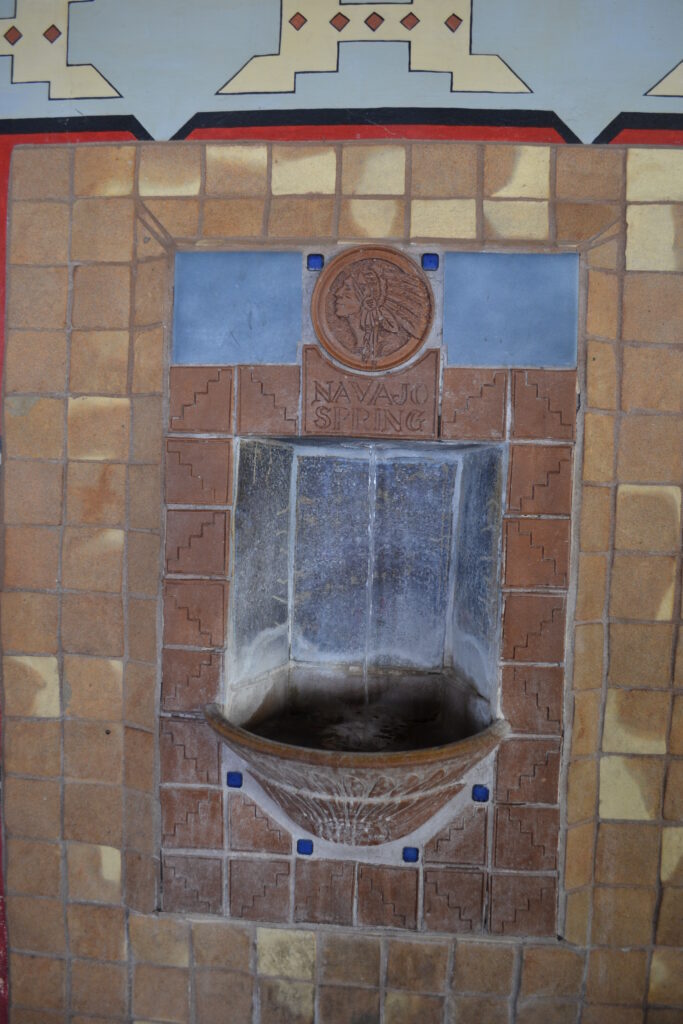
Navajo Spring
Manitou Springs, Colorado, USA
Just off of Main Street in historic Manitou Springs, at the back of the popcorn and candy store in front of the amusement arcade, a natural soda spring comes out of the wall in a decorated font. It is one of eight famous natural springs that put this town on the map. The spring was initially visited by Native American Indians who sought their healing and spiritual powers, which some believed were gifted by the great spirit called Manitou.
They were then frequented by white Euro-American settlers, who pushed the tribes out and commercialized the area. Legend has it that the Utes placed a curse on all whites that the Westerners could never have a successful business in this place because of the commercialization of this particular spring. By the late 1880s, the Westerners built a large bathhouse and spa, as well as a bottling plant, on this former location but did not succeed. The waters, however, were famous throughout America at that time and place.
The spring waters are fissured through rock fractures from the rainwater and snowmelt from Pikes Peak. Water reaching the depths becomes heated and mineralized, flowing up through the Ute Pass fault zone into limestone caverns that carbonate them and are tapped into by natural springs or wells. Each spring in the area has its distinct taste and flavor. This particular spring originally had a bowl-like concretion of calcium carbonate large enough to dip or wash oneself in.
From 1871-1972, Chief Joseph Tafoya – Chief Joe “Little Deer” and his family came to this spot to do authentic Indian dances and songs from the Tewa tribe of the Pueblo Reservation of Santa Clara, New Mexico. In 1889, Jerome Wheeler built a 3 story bottling plant east of the arcade. He used these waters to bottle up to 5,000 gallons of water daily, selling it worldwide as table water for the famous non-alcoholic Giner Champagne. After the collapse of the plant, the spring fell into abuse and was restored in 1991 by Manitou’s residents and donors.
Navajo Spring: “Chief Joseph Tafoya – Chief Joe ‘Little Deer’ 1891-1972: Generations of the Tafoya family have presented authentic Indian dances and songs on this site and at the Manitou Cliff Dwellings Museum since 1925. The Tafoya Family Dancers are members of the Tewa tribe from the Pueblo Reservation of Santa Clara, New Mexico, and descendants of the ancient Puye Cliff Dwellers. For 15 years, Chief Joseph Little Deer served both as governor of the Santa Clara Reservation and Chairman for the All Pueblo Indian Council. He introduced a democratic form of government on the reservation, opened his home to orphaned Indian children, and worked tirelessly to improve the living conditions of his people. Chief Little Deer married Petra Suazo, a great niece of Cheif Manitou so named for his active promotion of Manitou Springs at the turn of the century. Chief Manitou danced for 20 summers at the Cliff Dwellings museum. Navajo Spring is one of the seven natural soda-type springs that led to the settlement of Manitou. The early French trappers named the bordering creek “Fountaine qui Bouille”, the Boiling Water. Mineral deposits containing large amounts of carbonate of lime created a natural basin where the Indians bathed their sick and wounded. The white mineral basin now is hidden under the arcade floor. In 1889, Jerome Wheeler built a 3-story bottling plant east of the arcade and used Navajo Spring for bottling up to 5000 gallons of water a day. The water was sold worldwide as table water of the popular non-alcoholic Ginger Champagne. Navajo Spring was restored in 1991 by generous assistance from various donors” ~ sign outside the Spring.
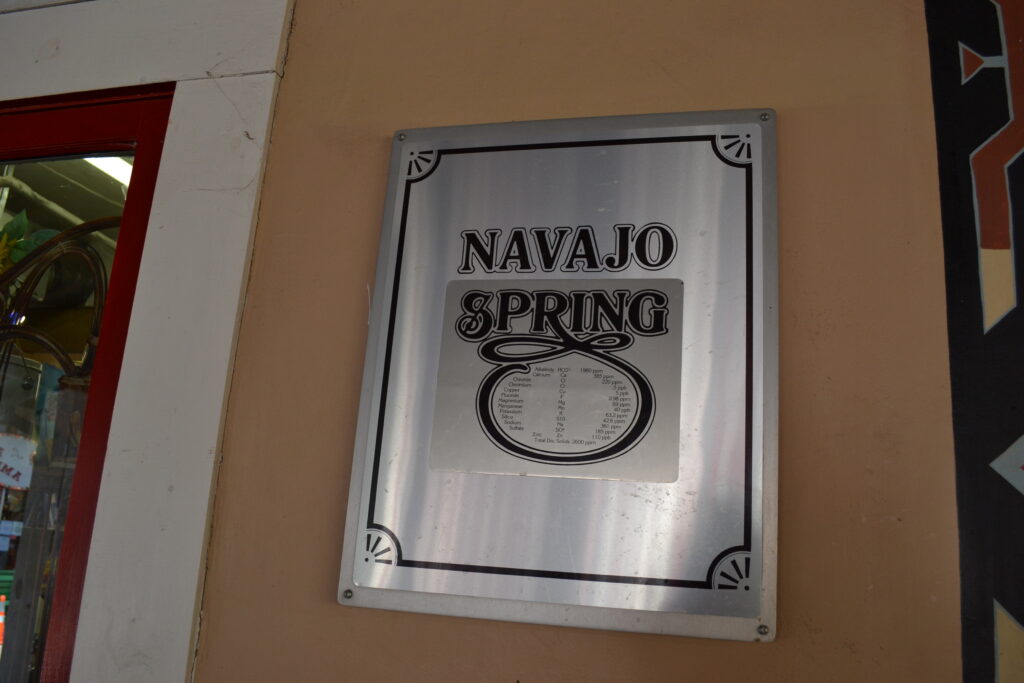
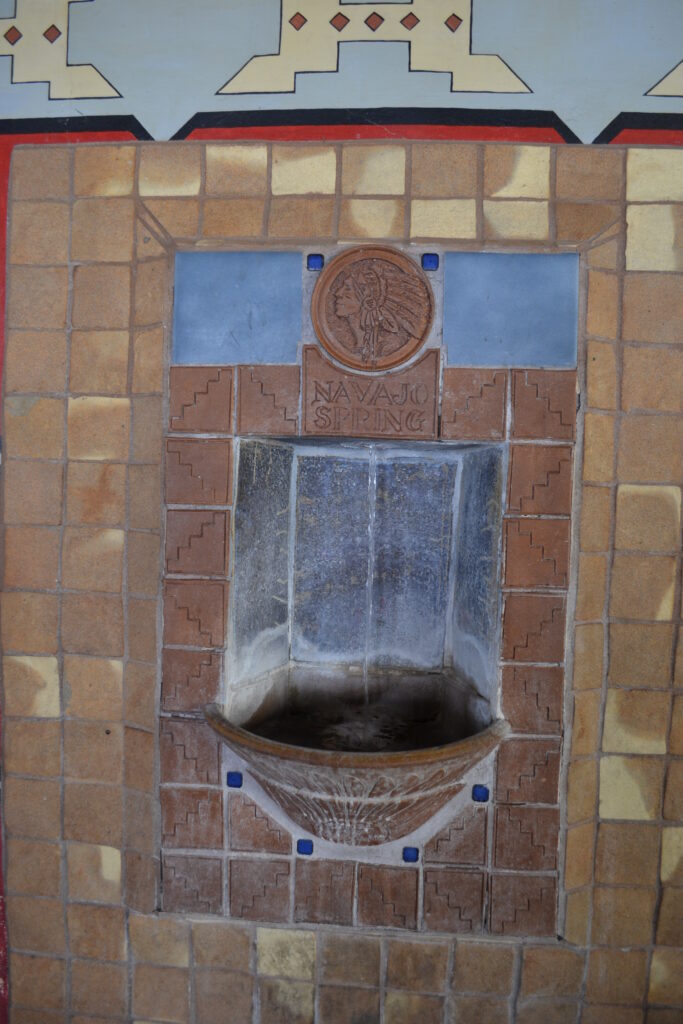
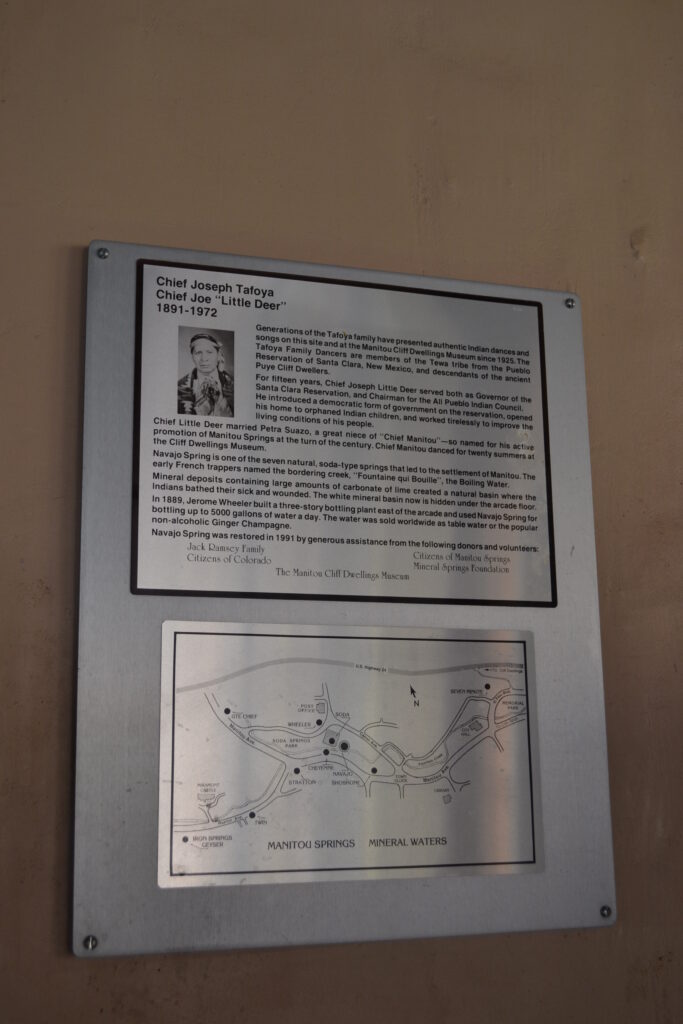
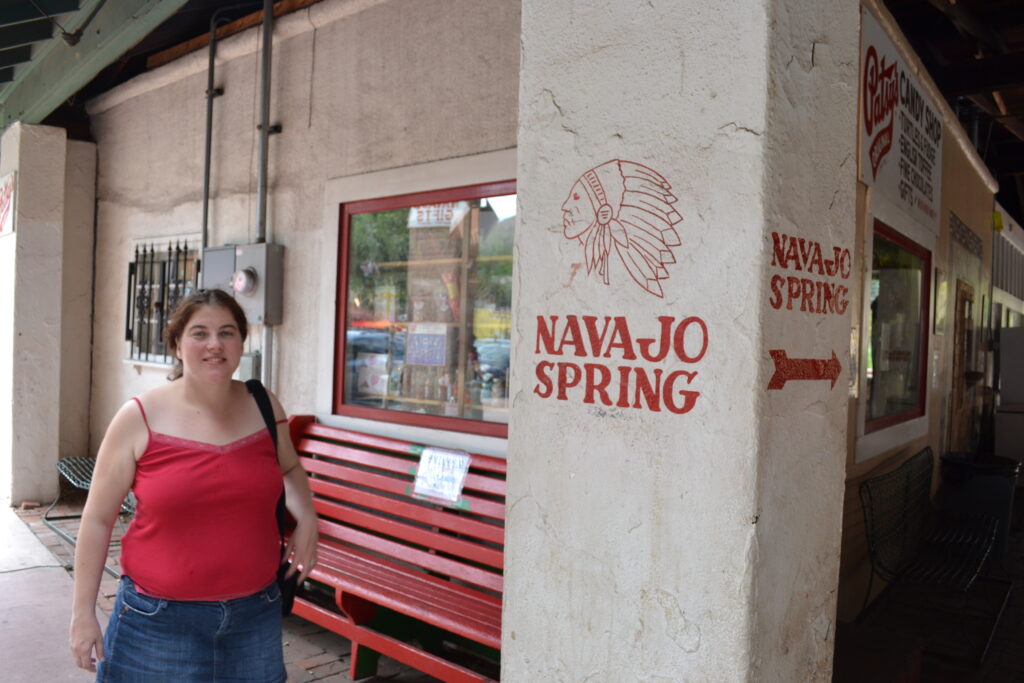
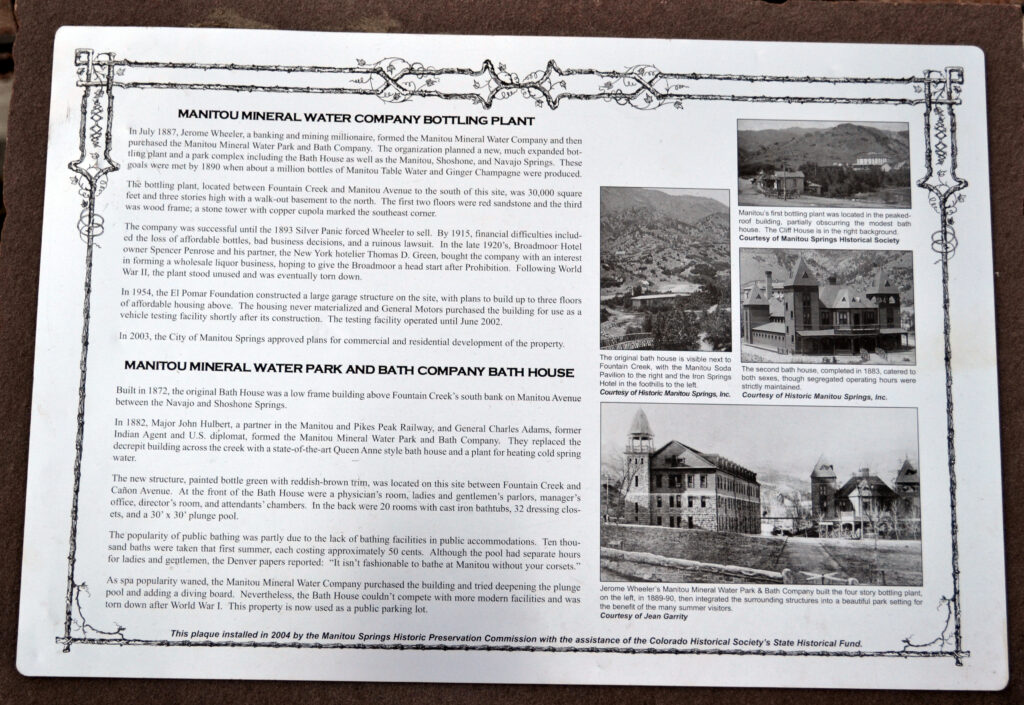
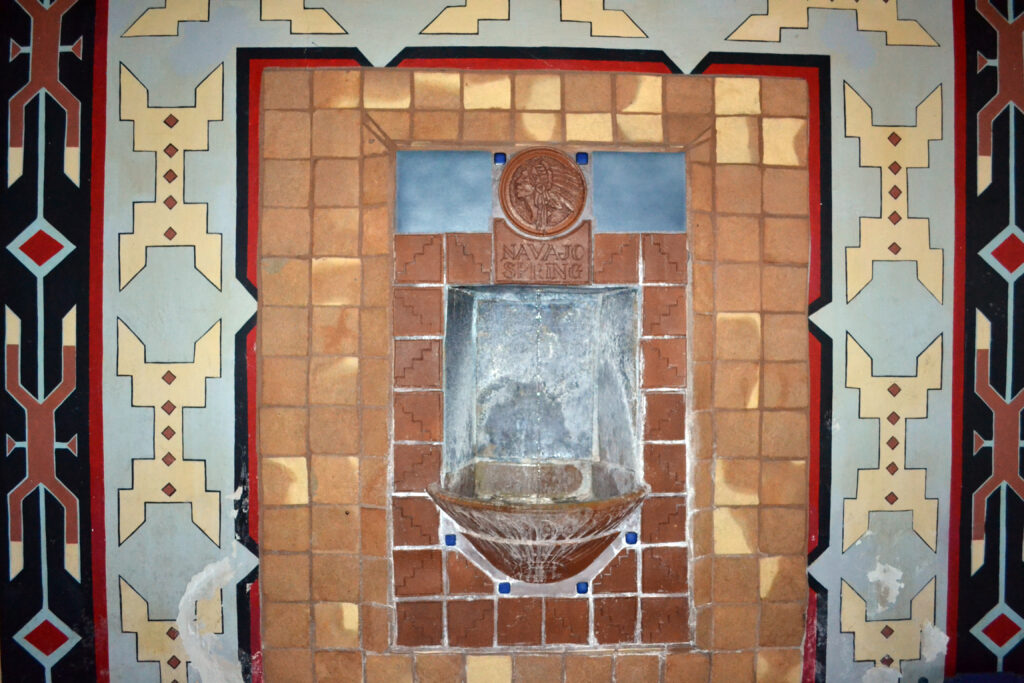
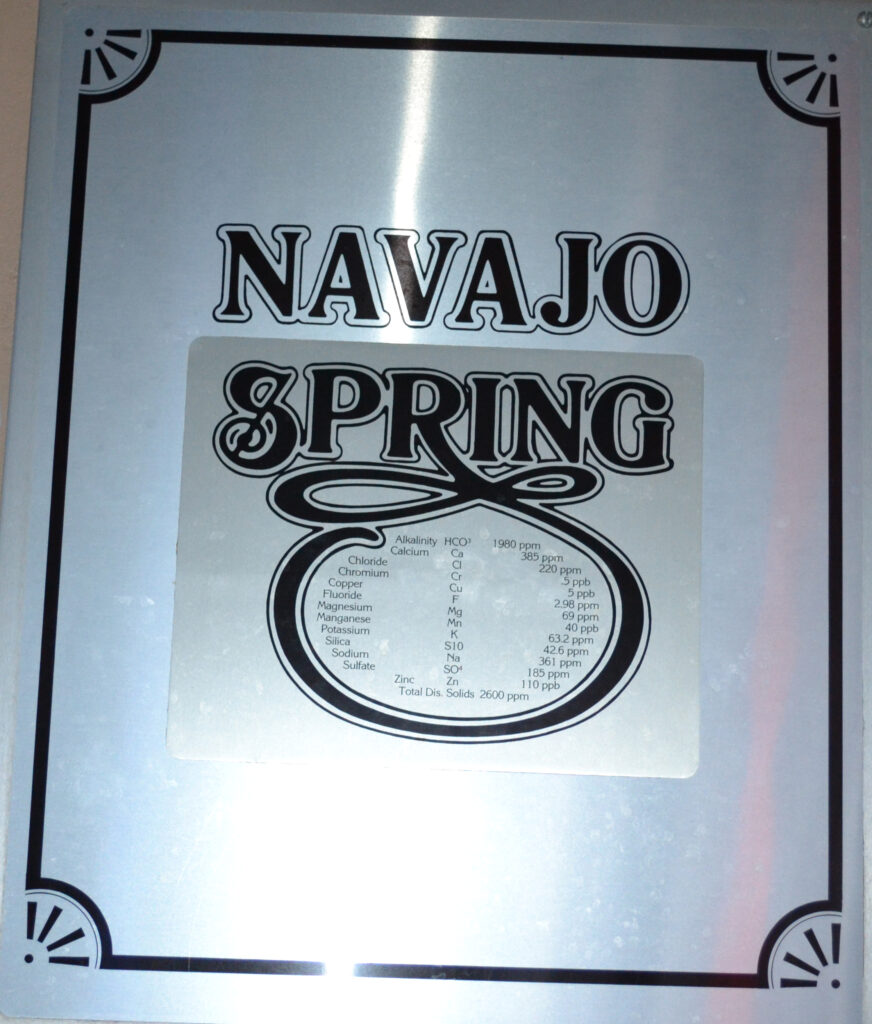
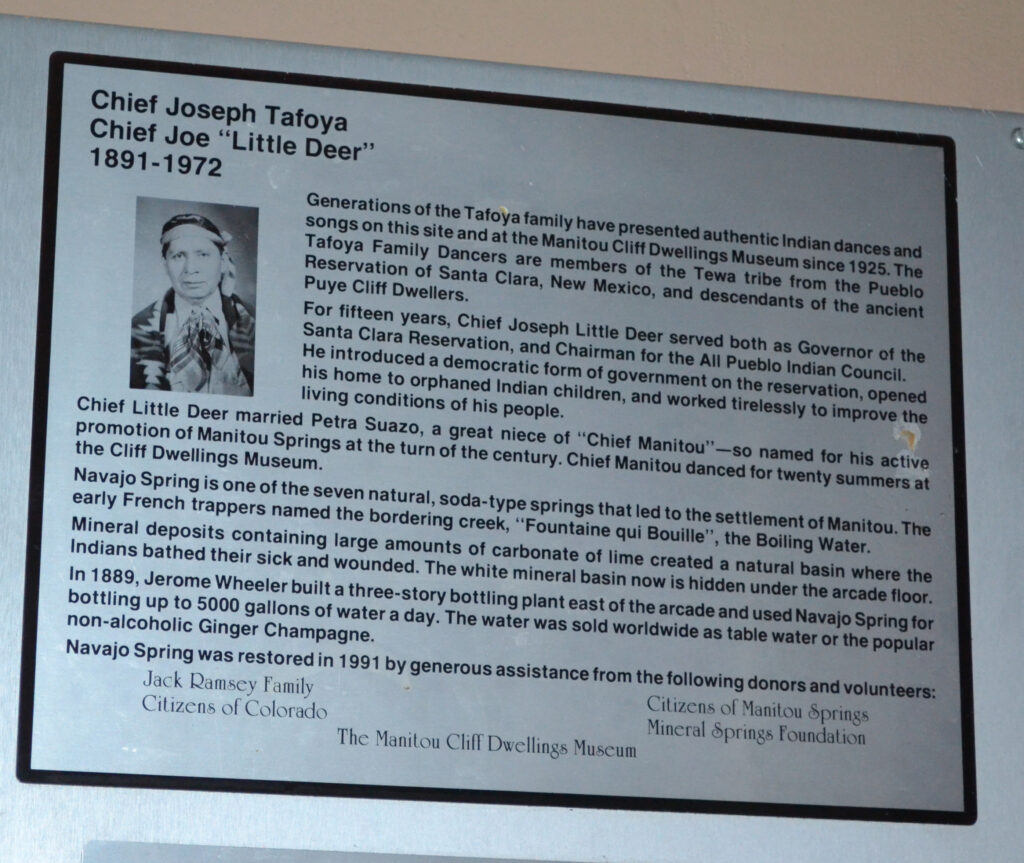
On 8/26/17 Navajo Spring was not running:
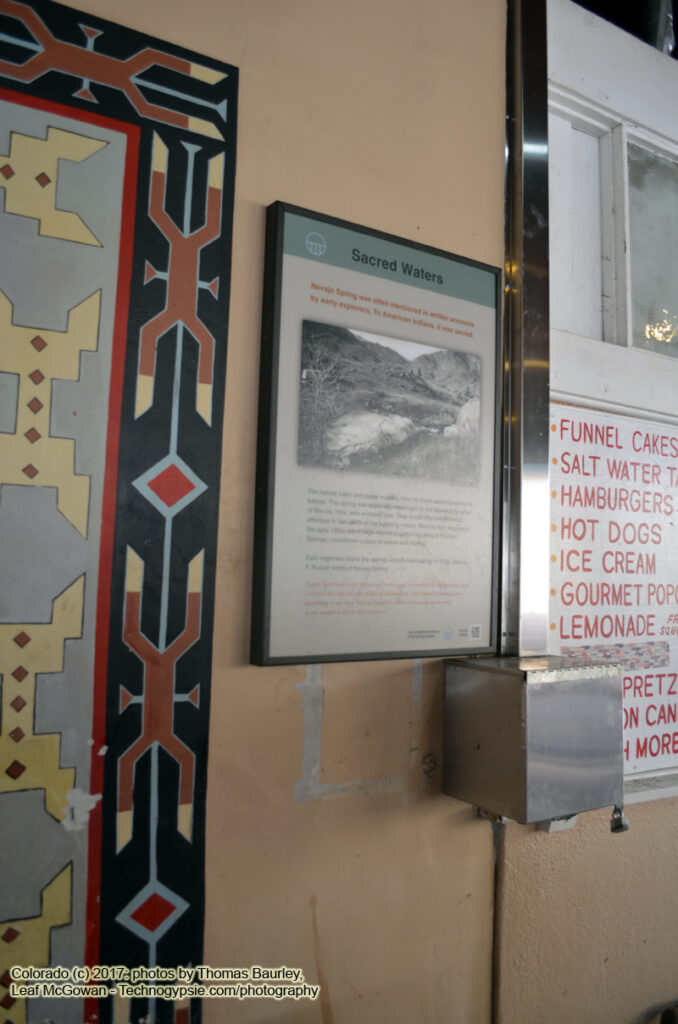
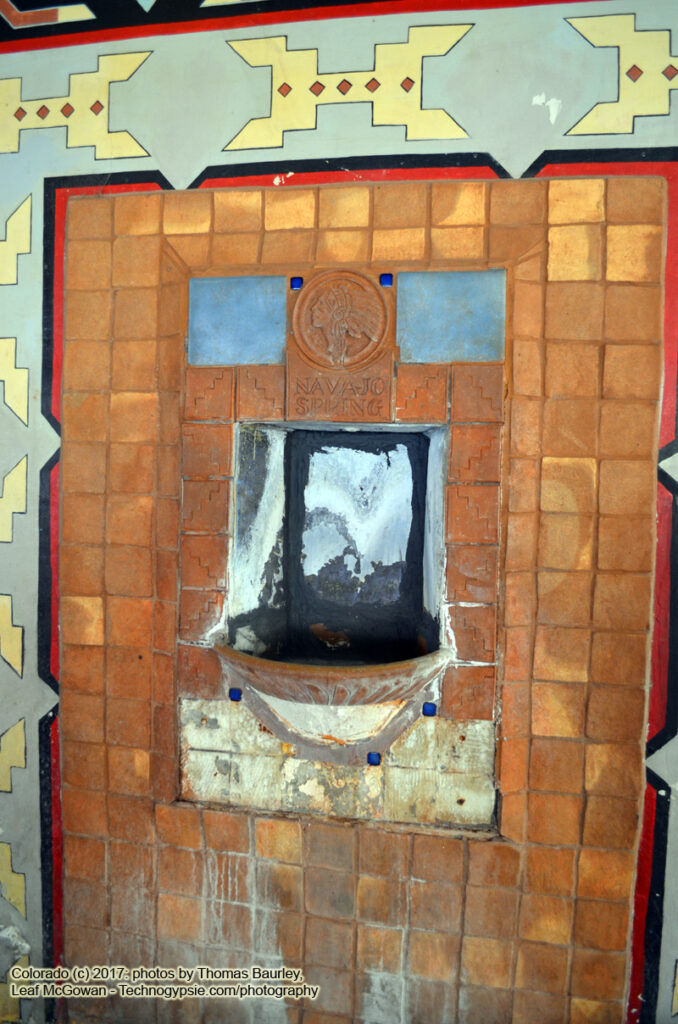
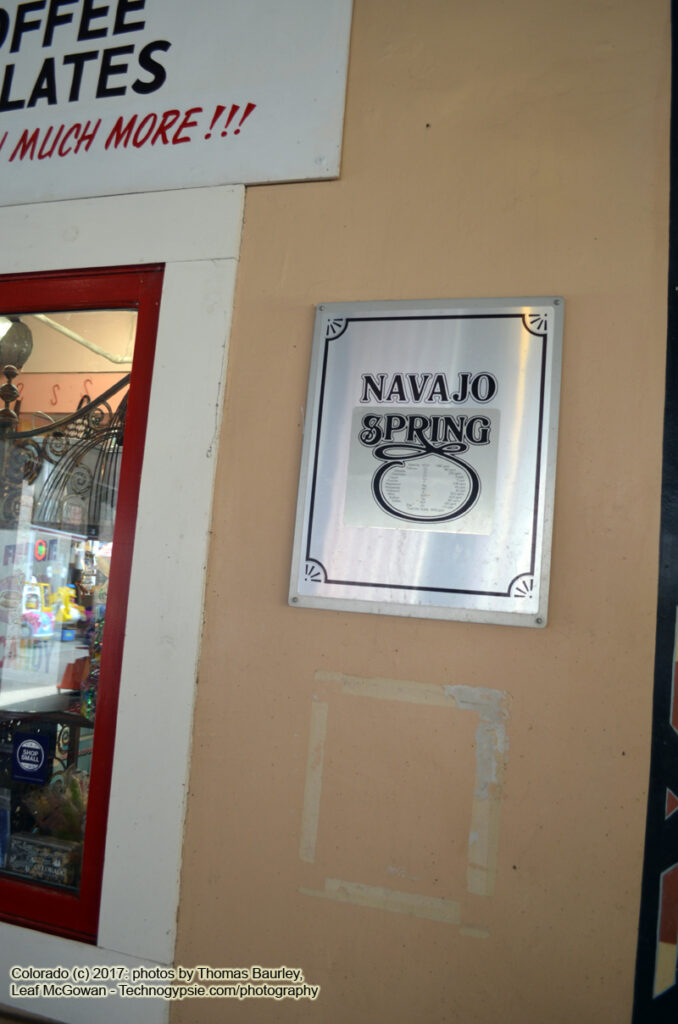
The Springs of Manitou:
https://wells.naiads.org/the-magic-and-minerals-of-manitou-springs/
- Cheyenne Spring – This natural sweet soda spring comes from limestone aquifers and is believed to be over 20,000 years old.
- Iron Spring – The Iron Spring is named after its harsh, foul, iron-tasting flavor and content. It was a man-made spring drilled in the 1800s and prescribed to patients for iron deficiency.
- Lithia / Twin Spring – This is a combined location of two man-made drilled springs—Twin Springs and Lithia Springs. It is popular for its Lithium content and sweet taste, calcium, lithium, and potassium content. It’s popular to mix it in lemonade.
- Navajo Spring is a natural soda spring over which commercial development was built. It is now within and beneath the popcorn and candy store. This was the most popular spring, frequented by Native Americans and early Euro-American settlers, and was the founding spring for the village. It originally fed a large bathhouse and bottling plant, bringing fame to the town.
- Old Ute Chief Spring – is a defunct spring outside the old Manitou Springs bottling plant.
- Seven Minute Spring – A man-made spring drilled in 1909 to enhance the neighboring hotel’s tourist attraction. Its unique carbonization caused it to erupt like a geyser every 7 minutes. It became dormant until the 1990s, when it was re-drilled, and the surrounding park was established.
- Shoshone Spring—This natural spring had sulfur content and was prescribed by various physicians for curative powers before modern medicine became popular and effective.
- Soda Spring – located in the spa stores next to the arcade.
- Stratton Spring—The Stratton Foundation created this man-made drilled spring as a service to Manitou Springs village, where tourists could come and partake of its waters. It is dedicated to early Native American Trails.
- Wheeler Spring—This is another man-made drilled spring donated to the city by settler Jerome Wheeler of the New York Macy’s. Wheeler resided and banked in the town during the mining and railroad period. His former home is located where the current post office is today.
References:
- Gazette 2015 “List Manitou Springs”. Website referenced 12/21/16 at http://gazette.com/list-the-springs-of-manitou-springs/article/1565225.
- Harrison, Deborah 2003 “Manitou Springs”. Arcadia Publishing. ISBN 978-0-7385-2856-4.
- Manitou Springs Chamber of Commerce 2012 “The History of Manitou Springs”.
- Mineral Springs Foundation 2013 “Mineral Springs”. Website referenced 12/21/16 at http://www.manitoumineralsprings.org
- Manitou Mineral Springs 2015 “7 Minute Spring”. Website referenced 12/21/16 at http://manitoumineralsprings.org/7-minute-spring.html
- National Register 2013 “American Dreams – National Register of Historic Places in El Paso County, Colorado.
- Visit Colorado Springs 2016 “Manitou Mineral Springs”. Website referenced 12/21/16 at http://www.visitcos.com/manitou-mineral-springs.
- Wikipedia 2016 “Manitou
Discover more from The Naiads Well
Subscribe to get the latest posts sent to your email.
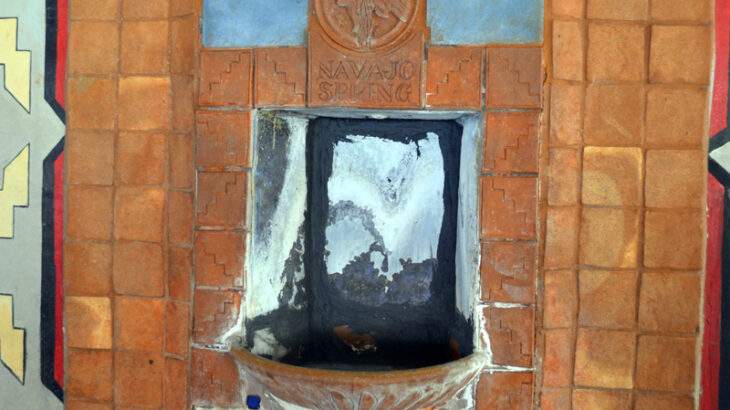
3 thoughts on “Navajo Spring (Manitou Springs, CO)”